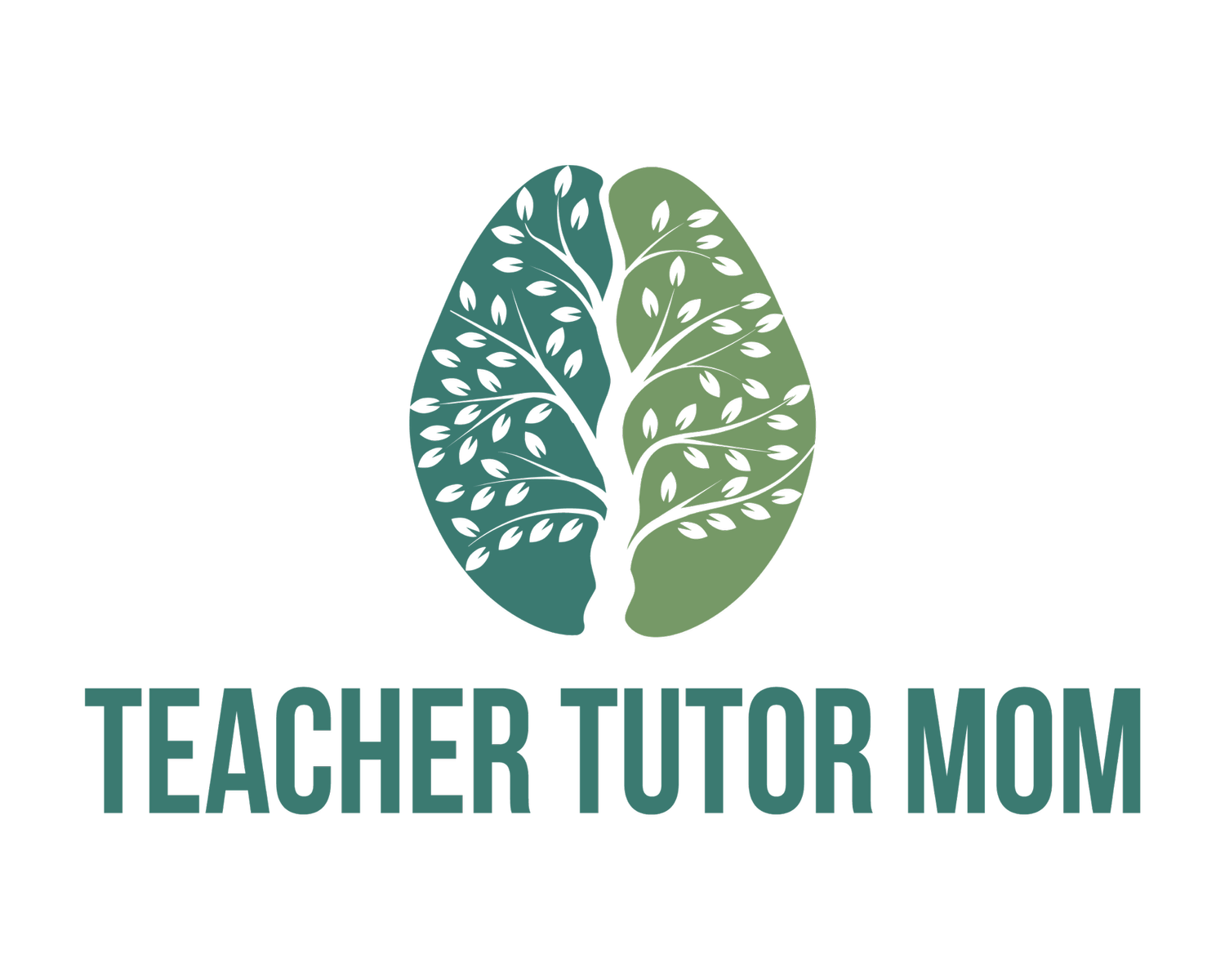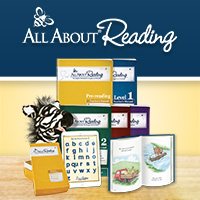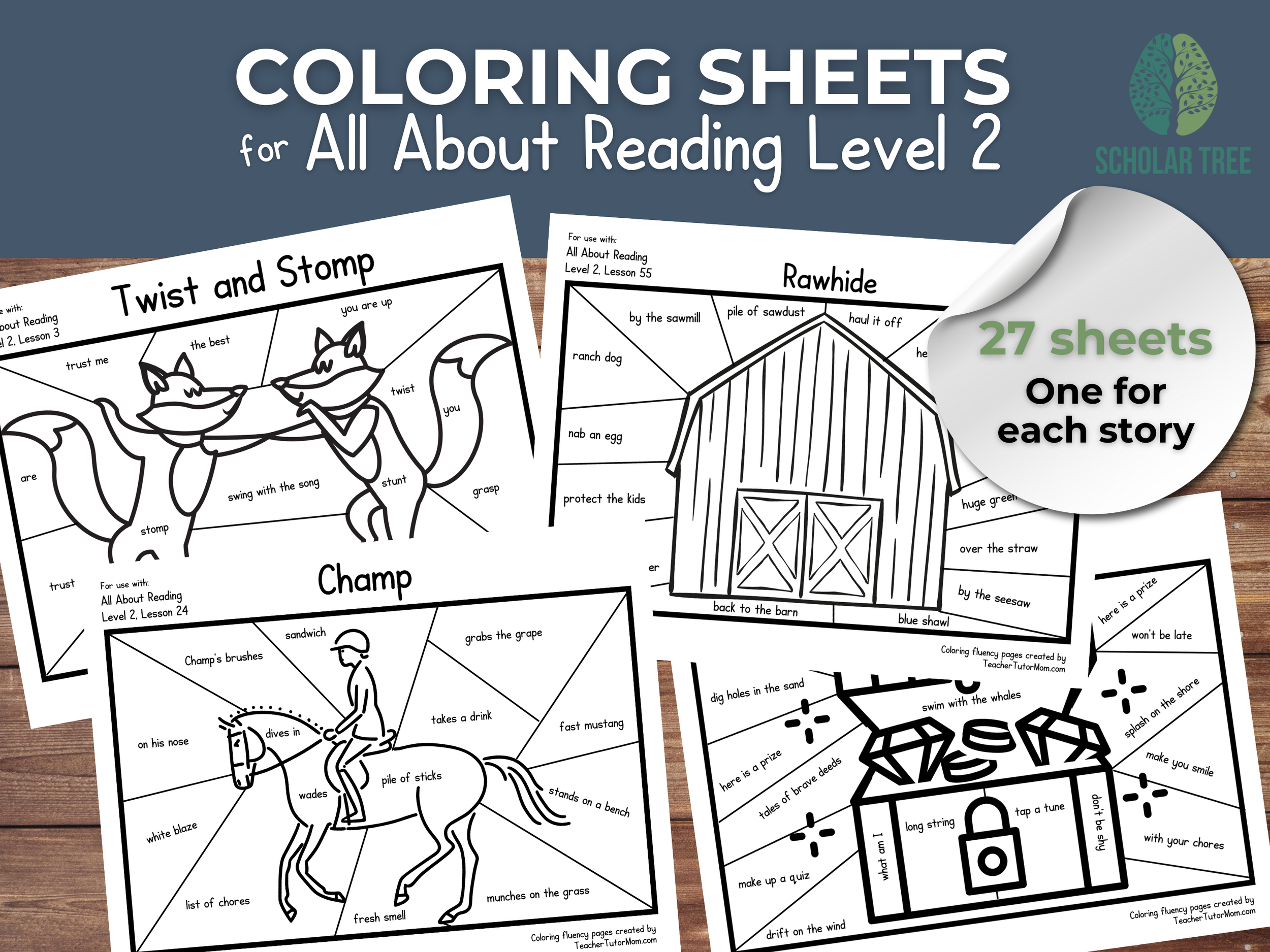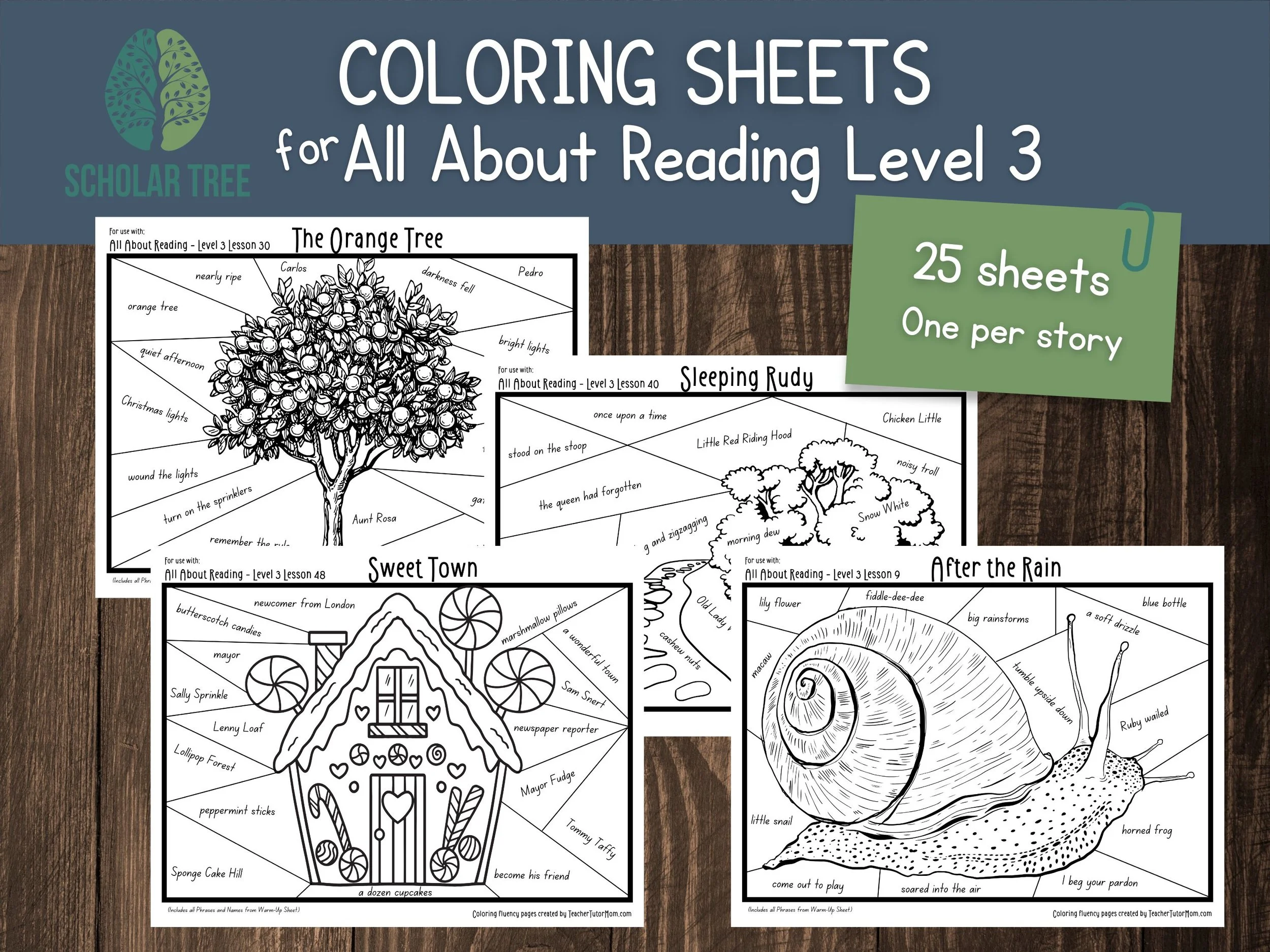All About Reading Curriculum Review
Heads up: This post contains affiliate links. That just means, if you use one of my links to a product, I may earn a commission on that purchase, but it won’t cost you any extra money. Read more.
What is All About Reading?
All About Reading (AAR), the brain-child of Marie Rippel came about as she struggled to help her dyslexic son learn to read. Hers is a phonics-centered, Orton-Gillingham based, curriculum for early elementary students.
AAR includes four levels as well as a Pre-Reading curriculum. At the time of this writing, I am part-way through level four with my oldest and feel like I can finally say IT WORKS with some authority.
Check out the All About Learning Press website here.
Why did I choose this curriculum?
I have always known that I want my children to learn to read using a phonics-based approach. When I took an Orton-Gillingham (OG) certification course years ago, it cemented that idea as I saw the child-friendly hands-on approach coupled with the explicit, systematic instruction embedded in the OG approach. While many kids do learn to read without systematic sequential phonics instruction, many others don’t - and by then they are already behind.
I believe it is in the best interest of all children to be taught the building blocks of the English language to set them up for success. Many kids will naturally pick up on patterns in the language and will take off as readers without knowing “all the phonics rules,” BUT even they will have a better foundation if they have learned all the rules.
As of October 2024, I have used the Pre-K, Level 1, Level 2, Level 3, and started Level 4 of the All About Reading curriculum with my own children. So this review of the All About Reading (AAR) curriculum is based on my experience with it up to this point.
Placement and Scope and Sequence
The All About Learning Press website has a placement test that you can use to determine where you should start your child. I would definitely recommend using (or at least look at) this.
Each level of AAR has its own tab. If you scroll down the page in any of the levels you will find a Scope and Sequence for that level (as well as samples of the books and instructor’s guide).
Pre-Reading Level
This level of the curriculum is somewhat different than the others (levels 1-4). Although it has two books of poetry, they are not "readers" but are meant to be read by the parent/tutor to the child as they study each letter. The letters are taught in order from A to Z rather than in a phonetic sequence. They teach capital letters A to Z, followed by lowercase a to z, and then a third round goes back through the alphabet teaching the letters' initial sounds.
Phonological and Phonemic Awareness Games
Phonological and phonemic awareness games are included throughout - such as rhyming activities that help to prepare them for reading. I found these incredibly helpful and fun for the children.
These types of activities are extremely important for building pre-reading skills. Kids need to be able to identify the sounds they are hearing (NOT necessarily the letter names at first!)
Activity Book
There is an activity book that comes with the program. It includes game pieces and coloring sheets. If you purchase the optional letter craft books you could skip the letter coloring pages (if you wanted to), but you would still need this activity book to complete the curriculum.
Optional Items
The two letter craft books are optional. They involve cutting and pasting pieces to the letters to make an animal shape out of it. One is for the uppercase letters and one for the lowercase letters. I highly recommend these additional books - especially if you have all the good intentions of doing fun crafts but run out of time/steam/etc. The pieces are ready-to-go, you just have your child cut and paste them! Click on the links above to check out each book and see what each of the finished letters will look like!
It’s definitely worth buying the bag to keep everything in. Ziggy fits in there perfectly along with the manual and workbook and card box.
Must-Have Optional Items
The Optional Items are SO worth it. These are listed in my order of preference:
Don't skip on Ziggy! Seriously. Trust me. The kids love him - and he is special...only for reading time.
The extra games with Ziggy are fantastic and so much fun for the kids. They even include a downloadable chart to show you which lessons the games correspond to.
The alphabet crafts books - uppercase letters and lowercase letters - while not "necessary" since there are craft pages included in the curriculum itself, are SOOOOO stinkin' cute. So, if your kids like crafts, buy them. You MAY reproduce them for multiple kids btw (as long as you have a color printer). They didn't have them available when my first was in this level, but I have enjoyed doing them with my younger kids.
The Tote Bag - I really like the tote bag and find it helpful for keeping the supplies together. BUT, it would be my last purchase if you are picking and choosing.
Personal Experience
Just for reference - I went through the letters but stopped at the sounds because my first kindergartener knew most – if not all of them – by that point. So, we moved on into AAR 1. As my second kid started kindergarten, we utilized these for a while but then stopped and moved on to Level 1 when I felt he was ready. (We didn’t complete the Pre-Reading level because he was “ready.”)
Side note – I didn’t realize that the activity book was copy-able. So, I should have just copied for my other kids instead of purchasing one per child. At least I figured it out before I bought a third!!
Overview of Levels 1-3
IMPORTANT NOTE: The levels of AAR do not coincide with grade levels.
Program Progression
This program is meant to be used in any grade and progressed through at the child’s pace. With my oldest, we completed part of Pre-Reading, all of level 1, and a few lessons of level 2 in Kindergarten. We completed level 2 and started level 3 in First Grade. We finished Level 3 in Second Grade and will start Level 4 in third. My second child (a very young kindergartener) started kindergarten with Pre-reading and moved on to level 1, but he will finish level 1 in first grade. Other students’ progress will vary depending on their readiness. Don’t worry about comparison. Just work through the program with your child at their pace. It will pay off.
What Each Level Includes
The following list applies to Levels 1-4 (not the Pre-Reading level).
A teacher's manual
A student learning packet (see this article for how I reuse my material from child to child legally)
Flashcards (and a box if you choose to order it)
Several readers
Letter-tiles (but I prefer to use the app - see below)
Lesson Structure
Starting with Level 1, AAR follows a sequence of 1-2 lessons introducing a concept (ex: the first sound of th), followed by another lesson that has a story, which corresponds to the new concept. They also usually introduce 1-3 sight words (or "leap words") along with each new phonics concept.
The instructor’s guide says to spend 20 minutes only and then STOP. I would highly recommend following this procedure. I did not always actually time our lessons, I just tried to keep it to that general time frame - esp. if my child was getting frustrated. In fact, if they are frustrated keep it even shorter!!
Progress Charts
Each level includes a sticker chart that the student can use to mark each lesson once completed. These are available (for each level) on their website so you can print for multiple students. Additional stickers are available to purchase through the site for a couple bucks.
When you have a second kid coming along behind, just go ahead and get another set of stickers for them to use the cute little animals too. You might end up with extras, but what kid ever complains about having too many stickers!?
The App
I have found their Letter Tiles App well worth the money that I paid for it. This takes the place of the magnetic tiles that come with the program. However, we have used both, and I’ve even had a request to use the tiles instead of the app. However - I find it difficult to keep up with all of the tiny pieces (esp. with toddlers/preschoolers in the house) and much easier to transport the ipad around.
The app is available for download on iPad, Android, and Amazon Fire tablets. Click here to check out the tiles and app, and then scroll down toward the bottom to see the links to buy the app.
Our Experience
AAR 1 was fantastic. We moved more quickly through it than I think a lot of people talk about – at least from some of the YouTubers I follow. Some of the complaints I have heard refer to its slow pace. I did not actually not feel like it was a slog. We used the fluency sheets as needed and we didn’t belabor it. I made a TON of coloring sheets to go with the fluency pages and that made them far more enjoyable (you can find them on my Etsy store). I would actually help him color so it moved faster but have him read the words and phrases. (Note I was just homeschooling one kid at the time; I imagine in future this may not be as feasible.)
Mastery Strategy
Another way that we “sped it up”…To determine whether a word was “mastered,” I would slowly count to three in my head while letting him look at the flashcard. If he could say it before the time was up I considered it mastered. This particularly competitive child found this very motivating. He would eagerly ask, “Did I master that one?”
Level 2:
Personal Experience
This was the level that I as the parent felt the most frustrated (or insecure?) while teaching. We continued to work through level 2 in the same way we did level 1. I used the “mastered word” strategy of counting to three silently in my head before putting a word in the “review” pile.
Story Length and Complexity
The stories in this level are significantly longer (and more interesting). So, we would not always complete the story lesson in one day. We’d often break it up into two days so we could complete the activities and then read the story the next day. (The 20 minute rule still applies!!)
Progress Concerns
We did go slower through level 2 just because of the material becoming more complex. And to be honest, around mid-fall I was starting to worry that my child was progressing too slowly in his overall reading. I was worried that he wasn’t reading as quickly or as many words as his peers. (I don’t know if this perception was right; but I’m just sharing my own insecurities as the mom). The reason for this - I think - is that he wasn’t learning loads of sight words like his public school friends. He was being taught the phonics systematically and sometimes it felt like it wasn’t fast enough to show dramatic improvement.
Breakthrough Moment
BUT right after Christmas of first grade I saw something just “click” in my son’s brain with reading, and he literally just took off. And when I say “took off” - I mean reading tons of words that he hadn’t even studied the phonics concepts for. The lightbulb had turned on!
Similar Experiences
I have spoken with some other moms who have used this curriculum and they say the same thing. Their children seemed to go slowly through level 2 until toward the middle/end of it and then something clicked and they just started reading.
Trust the Process (or not) - But trust your own reasoning
One thing that got me through during my insecure stage of using this level was remembering my why. I chose this curriculum for a reason. And I knew (with a little bit of doubt if I’m honest) that it would pay off in the long-term.
Level 3:
This level continues to dig deep into important phonics fundamentals.
Personal Experience
Because of a much-anticipated reward we had promised my son when he finished level three, he wanted to do 4 lessons per day last summer to try to get it done. LOL….We actually did do 2-3 lessons in one day but I realized pretty quickly that although he could do it, he was not going to have time to absorb the important concepts being taught. So, we pivoted and allowed him to get his reward early after he read the entire list of words from Level 3 to me with almost perfect accuracy.
Importance of Fundamentals
I use this anecdote to say that by level 3 it may feel like your child already knows most of what is being taught - or at least be able to read the words that are included on the flashcards.
However, in my opinion, it is important to take the time - and even slow down if necessary - to make sure your kid is learning the phonics…not just reading the vocabulary.
Level 4:
I have not yet started this level (as of Summer 2024), and I know some people only go through level 3 before deciding their child is a good enough reader and moving on to other Language Arts focuses (besides phonics).
However, after prepping the material for this coming school year and looking at the Scope and Sequence for level 4, I believe it has many important advanced phonics concepts that I want my children to learn so they can become not just proficient readers but have a really solid grasp of the English language.
I plan to update this (or write a separate post in future) after we complete this level.
Conclusion
In wrapping up, I can't say enough good things about the All About Reading curriculum. It's a well-rounded, systematic, and effective phonics-based program that truly helps kids learn to read.
With its engaging materials, it provides an excellent foundation for young readers. As a parent and educator, I've seen the amazing difference it can make, turning hesitant readers into confident ones.
Whether you're just starting with the Pre-Reading level or moving through to Level 4, All About Reading offers a research-backed approach that will set them up for lifelong reading success.
Corresponding coloring sheets…
YouTube Videos
You might also be interested in watching some YouTube reviews from people I follow:
How to Teach Multiple Students with All About Reading (from Life in the Mundane)
She has all sorts of wonderful ideas and videos about All About Reading.
She has used all three of the curricula she mentions in this video (but not necessarily at the time she made this video). Search her channel for more about the other curriculums mentioned if you are interested.
What to Do After All About Reading Level 4 (from Life in the Mundane)
Again, her channel is full of wonderful AAR ideas.
What You Need to Know About All About Reading (from Life in the Mundane)
Yet more tips from the lady who has helped me the most as I have prepared for and taught AAR.
All About Reading Hack (from Little Podschool)
She uses a sort of portfolio method to make the student book reusable/re-readable for the student (but not for reusing with younger children).










